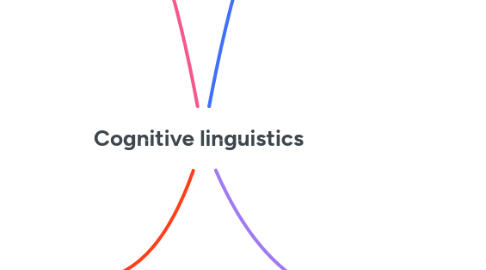
1. The term cognitive linguistics
1.1. Generative Grammar
1.2. Experiential Cognitive Linguistics
1.3. Key figures
1.3.1. Chomsky: Associated with generative grammar approach
1.3.2. Fillmore, Lakoff, Langacker, Talmy: Introduced the experiential cognitive linguistics approach
1.3.3. International Cognitive Linguistics Association (ICLA) : Represents the experiential cognitive linguistics approach
1.3.4. Journal: Cognitive Linguistics publishes papers on this approach
2. Frames, cognitive models, and conceptual metaphors
2.1. Frames
2.1.1. Commercial transaction frame
2.1.1.1. BUYER SELLER MONEY GOODS
2.2. Cognitive models
2.2.1. Idealized cognitive models
2.2.1.1. Noun bachelor within the context of marriage expectations
2.2.1.2. Example: ON THE BEACH PEOPLE SAND SHELLS BUCKET SWIM SUN BATHE BUILDING A SANDCASTLE
2.3. Cultural models
2.3.1. Shared by members of a culture
2.3.2. Based on experience of the world around us
2.4. Conceptual metaphors
2.4.1. Conventionalized metaphorical expressions
2.4.2. Source domain mapped onto target domain
2.4.2.1. ANGER IS A HOT FLUID IN A CONTAINER AN ARGUMENT IS A JOURNEY IDEAS ARE OBJECTS COMPANIES ARE PLANTS
3. The nature of cognitive linguistics
3.1. Generalisation Commitment
3.2. Categorisation
3.3. Polysemy
3.4. Metaphor
3.5. Cognitive commitment
3.6. Cognitive Semantics and Cognitive Grammar
4. What is cognitive linguistics?
4.1. Structuralism
4.2. Anthropological Linguistics
4.3. Cognitive Science
4.3.1. Field that includes cognitive linguistics, cognitive psychology, and neurolinguistics
4.4. Conceptual and Perceptual Categories
4.4.1. Figure and ground Landmark and trajectory Location in space Events and states Frames and schemas Categories and hierarchies
